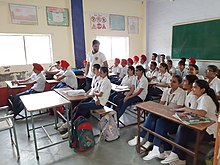
To teach the 3 Times Table, there are many teaching resources. They are high-quality and packed with valuable teaching tips accumulated over many years. They have stimulating images and visually stimulating materials that will keep kids interested and engaged. These are just three ways to make time table 3 entertaining and engaging for students. To test your students' knowledge, you could also make learning games. Also, don't forget about trying them out in a classroom.
Learning the 3 times table
There are several ways to practice 3 times tables. You can practice the 3 times table in sequence or random order. It's also possible to practice it on your tablet, smartphone, or computer. You can also print out the worksheets and work on them whenever you are spare time. Learning the 3 Times Table should be as simple as possible. It will be a key to year four maths.

Practice it
The times tables are very useful for elementary school children. This multiplication skill can be practiced in many ways. You can either practice a particular table or do it online. You can practice multiple times tables at once, all or one table. You will remember the numbers quicker if you practice. Here are some methods to practice the times table 3.
Recite it
It is very easy to recall the three times table. You don't need to know any special tricks. Remember that the multiples of three in a multiplication chart are an even mix of numbers. The difference in the two results between them is three. Recite the times table three for easy and efficient recall of math facts. With your child, practice multiplication and addition. This method will help you recall the patterns for 1, 3, 6, 9, and 10.
Make a video game
If you want to teach your child how to do times tables, why not create a game? Multiples of 3 can be a valuable subject to learn and a fun way for children to reinforce their learning. You can make a game using a tablet or a computer. Choose a game that's suitable for your child and has the times table. Children who love solving equations will enjoy the challenge and will be excited about playing the game.
Ask questions of the multiplication charts
The multiplication chart should allow you to ask questions. For example, how many times is seven times six times ten? 21 will give you the answer. Next, divide the answer by 2 and you will find the product. When you do this you'll notice that the product is twice your original number. This same principle can be applied to other multiplication facts. Multiplication charts have 81 entries, but it is best to not memorize them all.

Make it enjoyable
There are many different ways to make time table 3 enjoyable for your kids. These 3 times table activities will keep kids interested while they learn. Play 3 Times Table bingo: Have students answer the 6 questions at the table. Next, ask them to call out the correct responses. Hang bunting with the decorations for 3 times table is another fun way. Humpty Dumpty’s Wall Multiplying with 3 Worksheet is another fun activity. Players use the dice to calculate the sum of all the numbers they have added, and then add them up.
FAQ
What is a vocational school?
Vocational schools are institutions offering programs designed for people who want to enter a specific occupation. They can also offer training in specific skills and general education.
Vocational education is an important part of our society because it helps young people develop the skills they need to succeed in life. It provides high-quality learning opportunities for all students.
The vocational school offers a wide range of options to its students. These include certificates, diplomas and degrees, as well as apprenticeships and certificates. Vocational schools offer both academic and practical courses in math, science and English.
What's the purpose of education and schooling?
Education should help students develop skills necessary for employment. It is not only a pursuit of academic excellence, but also a social activity, where children can share their knowledge and gain confidence from one another through activities like music, art, and sports. Learning to think creatively and critically is a key part of education. This allows students to be self-reliant, independent, and confident. What does it really mean to have high educational standards
A good education system is one that helps all students achieve their potential. These standards provide clear guidelines for teachers to follow with their students. Educational standards should be flexible enough that schools can meet changing needs. A fair and equitable educational system must ensure that all children have equal chances of success no matter their background.
How do I select my major?
Students choose their majors according to their interests. Students may choose to major in the subject they are most passionate about because it is easier than learning something else. Others want to pursue a career for which there are no jobs available. Others are motivated to make a living while studying a major. No matter your reasons for choosing a major, you should consider the type of job that you might be interested in after you graduate.
There are many ways you can find out more about different areas of study. You can talk to family members or friends about your experiences in these areas. To find out if there are jobs available, you can read newspapers and magazines. Talk to a guidance counselor at high school about possible career paths. Visit Career Services in your local library. Your local library has books on a variety of topics. Use the Internet to search for websites related to specific careers.
Is it necessary to attend college in order to be an early childhood educator
It is not possible, however, to better prepare yourself for your future career in this field, it might be worth looking into college.
It is important to remember that it is not easy to become a teacher. Each year there are many applicants that are not accepted into programs. Many students also quit college after only one semester.
You must still meet stringent qualifications to be a teacher.
Statistics
- And, within ten years of graduation, 44.1 percent of 1993 humanities graduates had written to public officials, compared to 30.1 percent of STEM majors. (bostonreview.net)
- Data from the Department of Education reveal that, among 2008 college graduates, 92.8 percent of humanities majors have voted at least once since finishing school. (bostonreview.net)
- Think of the rhetorical power of nineteenth-century abolitionist Harriet Beecher Stowe, Martin Luther King, Jr., or Occupy Wall Street activists with their rallying cry of “we are the 99 percent.” (bostonreview.net)
- Globally, in 2008, around 89% of children aged six to twelve were enrolled in primary education, and this proportion was rising. (en.wikipedia.org)
- They are more likely to graduate high school (25%) and finish college (116%). (habitatbroward.org)
External Links
How To
Why homeschool?
There are many factors that you need to consider when deciding whether or not to homeschool.
-
Which type of education do YOU want for your child's future? Are you seeking academic excellence? Or social skills development for your child?
-
How involved are you in your child’s education? Do you prefer to keep informed about the activities of your child? Would you rather keep your child informed?
-
Are there special needs that your child has? What can you do to help your child with special needs?
-
Do you have the ability to manage your children's time? Are you able to commit to teaching your child at-home every day?
-
What subjects will your course cover? Math, science, language arts, art, music, history, geography, etc. ?
-
How much money can you afford to educate your child?
-
Is your child old enough for school?
-
Your child will need a place to live. You will need to find a place large enough for your child's classroom and provide adequate facilities like bathrooms and kitchens.
-
What is your child’s age?
-
When is your child supposed to go to bed?
-
When does he/she get up?
-
What is the time it takes to get from point A and point B?
-
How far is your child's school from home?
-
What distance is there between your home, and the school of your child?
-
How will you transport your child to and from school?
-
What are some of the advantages of homeschooling?
-
What are the disadvantages?
-
Who will supervise your child when he/she is outside?
-
What are your expectations from your child?
-
Which discipline will you choose?
-
What curriculum will you use?
There are many reasons why people decide to homeschool their children. Some of them include:
-
Your child has learning disabilities that prevent him/her from attending traditional schools.
-
You wish to offer an alternative education to your child.
-
You would like more flexibility with your scheduling.
-
You do not want to have to pay high tuition costs.
-
Your child receives a better education than what he/she would get in a traditional school setting.
-
You believe you know more about your child than the teacher in traditional school settings.
-
The school system is not what you like.
-
You feel uncomfortable with the rules and regulations of the school system.
-
You want your child with a strong work ethic.
-
You want your child to have the freedom of choosing which courses they take.
-
You want to give your child individual attention.
Homeschooling also offers many other benefits, such as:
-
There are no worries about uniforms or books, pencils, papers, or other supplies.
-
You can personalize your child's education according his/her interest.
-
Parents can homeschool their children and spend time with them.
-
Students who are homeschooled tend to learn more quickly than peers because they don't have to be distracted by their peers.
-
Homeschoolers often score higher than others on standardized tests.
-
Homeschool families tend to be happier overall.
-
Homeschoolers are less likely to drop out.